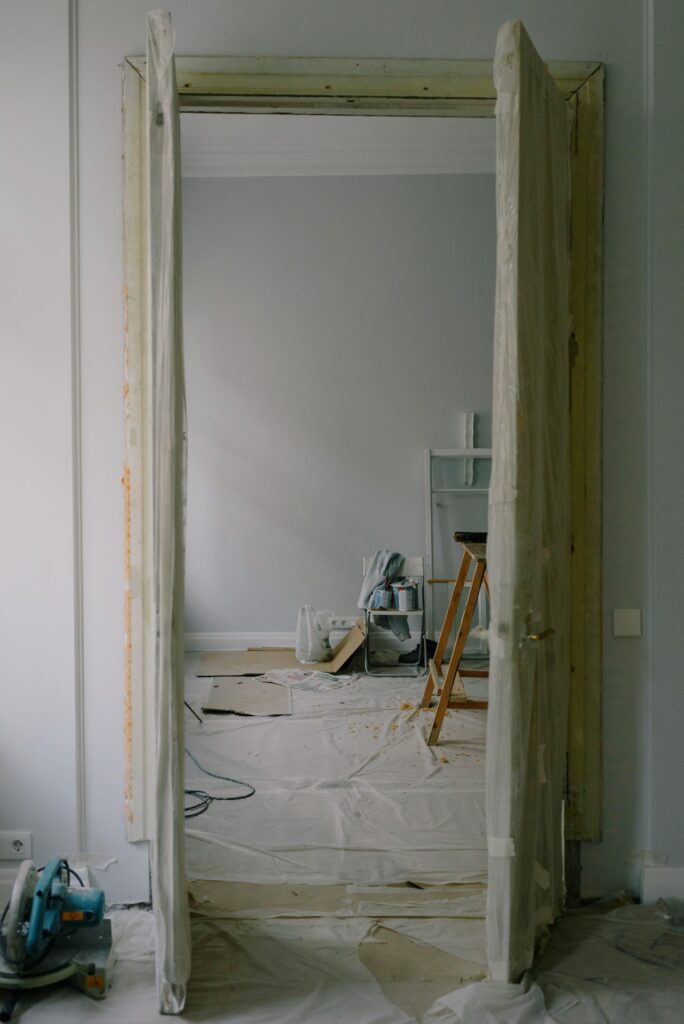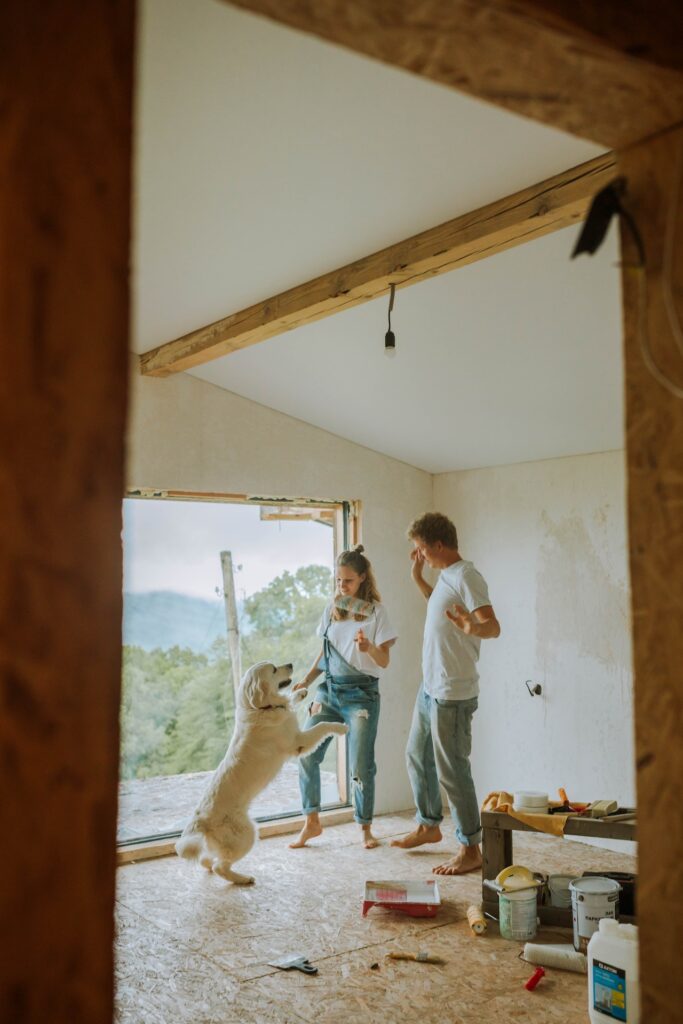For those not lucky enough to have the dulcet tones of Kevin McCloud on speed dial, the cost of home remodelling – creatively yet tastefully – can most certainly mount up. With fluctuating material and labour costs, inflation, and accurate foresight a rare thing in this world, it’s no surprise that home renovation costs can get seriously out of hand in the wrong ones.
Whether you want to knock down a wall or put one up, install some wiring or fix a window, erect a garden room or build a jacuzzi in the back garden, there are, fortunately, ways to prevent costs rocketing. What’s more, a skilfully done renovation can pay off as an investment, increasing the value of your home substantially. It all starts with sensible, smart budgeting from the off; here’s how to avoid spiralling home renovation costs in 7 IDEAL steps.
Check The Success Rate Of Planning Permission In The Local Area
If you’re purchasing a home to renovate and resell, particularly if you’re a first-time buyer, then it’s imperative that you play the long game; you must look for the potential that the property could offer you in sell on value later down the line.
Make this assessment by asking a few simple checks; you should assess the size of the rooms and ask if they could be extended; also consider if the garden big enough for an annexe or other extension; and, if the criteria is met on these, check if there’s a high success rate of planning permission in the local area. If all the boxes are ticked, then the property’s potential for renovation and value accrual is huge.
Of course, when renovating your home you must make sure that any updates you make match the house and its exterior’s overall aesthetic. Get the tone wrong and you risk decreasing the value of the property.

Seek The Expertise Of A Chartered Surveyor
Once you’ve found a house that you consider suitable for your project – or, equally, you’re considering your current property for renovation – then you should get in touch with a chartered surveyor as a matter of priority. Without their expertise, it would be foolhardy to begin any work.
A chartered surveyor will make an assessment of the property for structural issues that may be lurking, unbeknownst to you, and warn you against issues that will have those costs spiralling (and potentially, create obstructions to project completion).
That’s not all your trusted surveyor will do. They’ll also be skilled at spotting the risk of rodent or bug infestations, damp and mould, and drainage problems, all of which can impact of your home’s structural integrity and energy efficiency.
The surveyor will offer you a building report which will let you know what potential issues you may encounter, and offer suggestions of their own, or of their team, on SAP calculations. Knowledge is power in the renovation game, make no mistake.


Consider Second & Third Options
And because knowledge really is power when updating your home, it might be sensible not to allow one chartered surveyor to monopolise that knowledge. Instead, it’s worthwhile to call in an additional surveyor and structural engineer, for second or third opinions, should you have room in the budget.
Although this extended consultation represents a significant outlay before your project is even off the ground, enlisting the help of additional opinions will mitigate the risk of hidden costs later down the line.


DIY, But Known Your Limitations
Finally, some good news; not every aspect of your home renovation needs to involve the hiring of expensive labour. Often, renovations can be carried out on your own or with your partner, and a whole team of structural engineers will not be necessary, dependent, of course, on the nature of the work you’re doing.
More intricate tasks certainly do need outsourcing. If you are installing wiring or plumbing, for instance, then it’s heavily advised that you employ a professional. Should you just be knocking through a wall yourself or repainting, though, then you could potentially do this without assistance, as long as suitable caution was exercised.
As with any renovation or remodelling project, it is important that you are careful and exercise complete adherence to government guidelines and safety regulations at all times so as not to endanger yourself, your friends or family, neighbours, or those who live in the home.
Many renovation projects can be completed cheaply at home, so it’s not always necessary to have a team, and by doing that you significantly undercut costs – but as with everything construction related, you must know what you are doing and take good care.
It’s essential that you leave jobs that present a risk to life – such as complex wiring, gas work and, of course, scaffolding – in the more capable hands of the professionals.
Even when you feel that your DIY skills aren’t quite capable of producing the desired results, cost-cutting strategies can be used. For example, you can transform the look of your kitchen without ripping out all the cabinetry by simply changing the doors and hardware.
Establish A Realistic Timeline With Professional Oversight
Time, as they say, is money, and this couldn’t be truer when it comes to home renovations. Delays can quickly turn a well-planned budget into a financial nightmare, with extended labour costs, additional material storage fees, and the potential need for temporary accommodation all adding up.
Before breaking ground, establish a detailed timeline with clear milestones for each phase of your project. For larger renovations involving multiple trades, consider engaging a construction project management consultant who can coordinate the various professionals, ensure work progresses in the correct sequence, and identify potential bottlenecks before they become costly delays.
A skilled project manager will also help you avoid the common pitfall of trades waiting around for each other – something that can see your labour costs multiply whilst little actual progress is made. Their expertise in scheduling can prevent the domino effect that occurs when one delayed task throws the entire project off course.

Build In A Robust Contingency Fund
Perhaps the most crucial step in avoiding spiralling renovation costs is one that many homeowners overlook entirely: setting aside a substantial contingency fund. Industry experts typically recommend budgeting an additional 10-20% above your estimated costs for unexpected discoveries and changes.
This buffer isn’t pessimistic thinking – it’s pragmatic planning. Once you start opening up walls or lifting floorboards, you’re likely to uncover issues that weren’t apparent during your initial survey. Whether it’s outdated wiring that needs updating to current safety standards, structural timber that requires treatment, or plumbing that’s more extensive than anticipated, these discoveries are par for the course.
Having a contingency fund means you can address these issues promptly without derailing your entire project or forcing you to make compromises that could affect the quality or safety of the finished result. Remember, it’s far better to have this buffer and not need it than to find yourself halfway through a renovation without the funds to complete it properly.
Living In A Material World
One area of home renovation which often leads to spiralling costs is the purchase and movement of materials. This is, in part, down to the fact that such items experience huge fluctuations in value, rising and falling in cost because of the to-and-fro of supply and demand.
To mitigate this, to stay within budget and to keep costs from spiralling, consider deploying used, reclaimed or repurposed materials where possible, particularly from items within your own home which aren’t currently being used to their full potential. In doing so, you’ll not only protect your bank balance, but you’ll be helping the environment, too.
The labour involved in transporting materials can be costly, too, with man and digger hire, skip rental, and freight services all costing more than you might initially expect. Make sure you shop around, compare prices, and haggle if you’re to save a pretty penny or two.
And with that, we can’t wait to see what you’ve done with the place!





